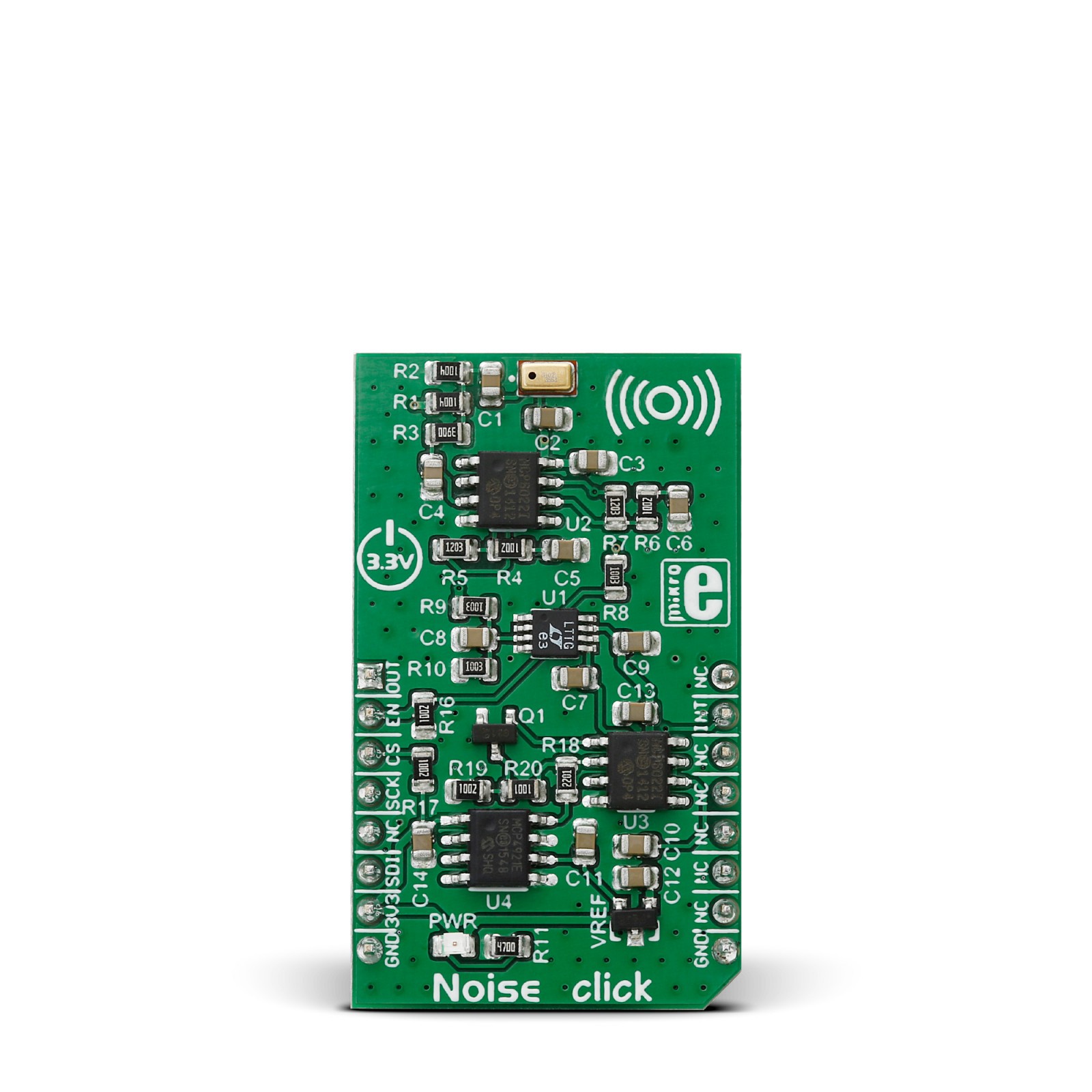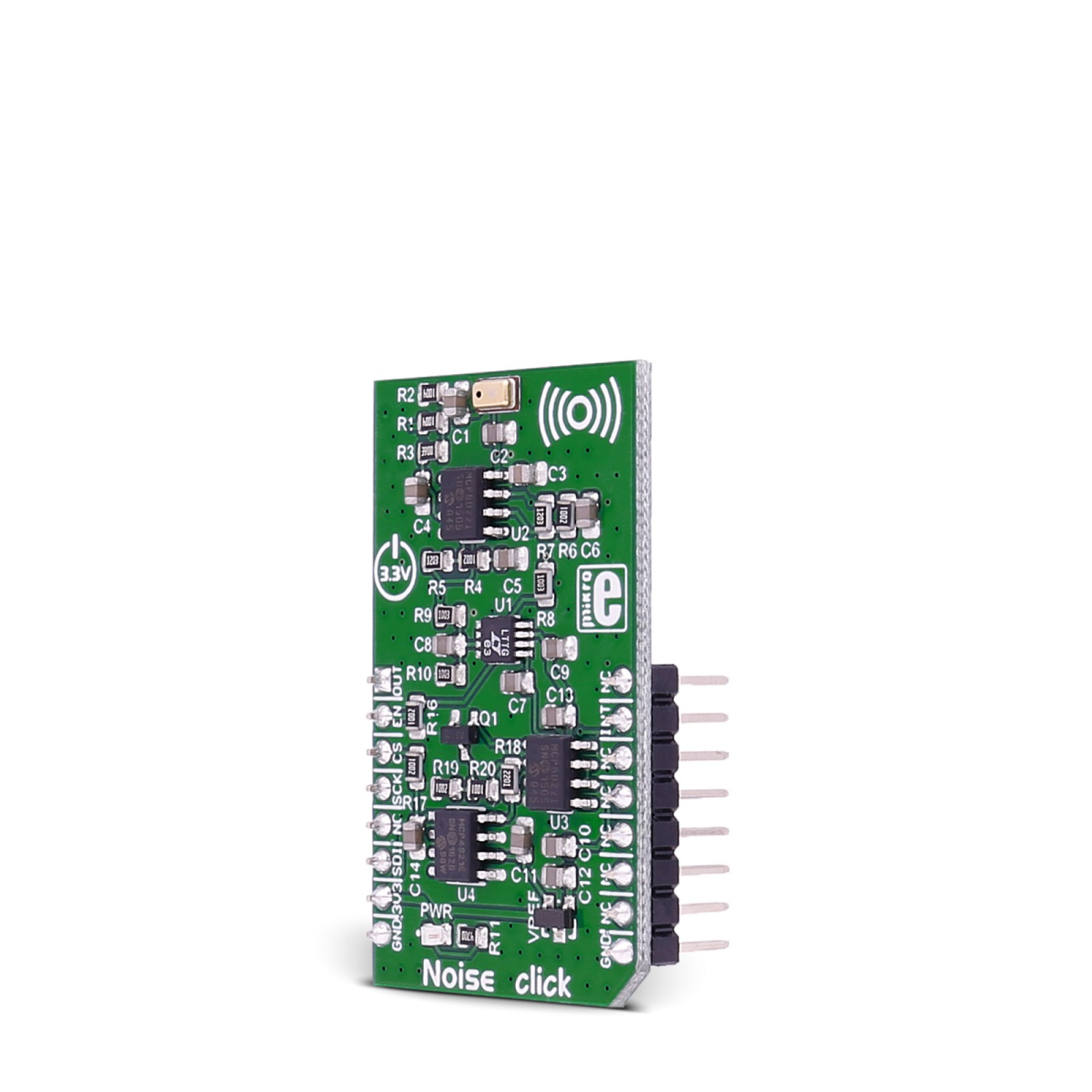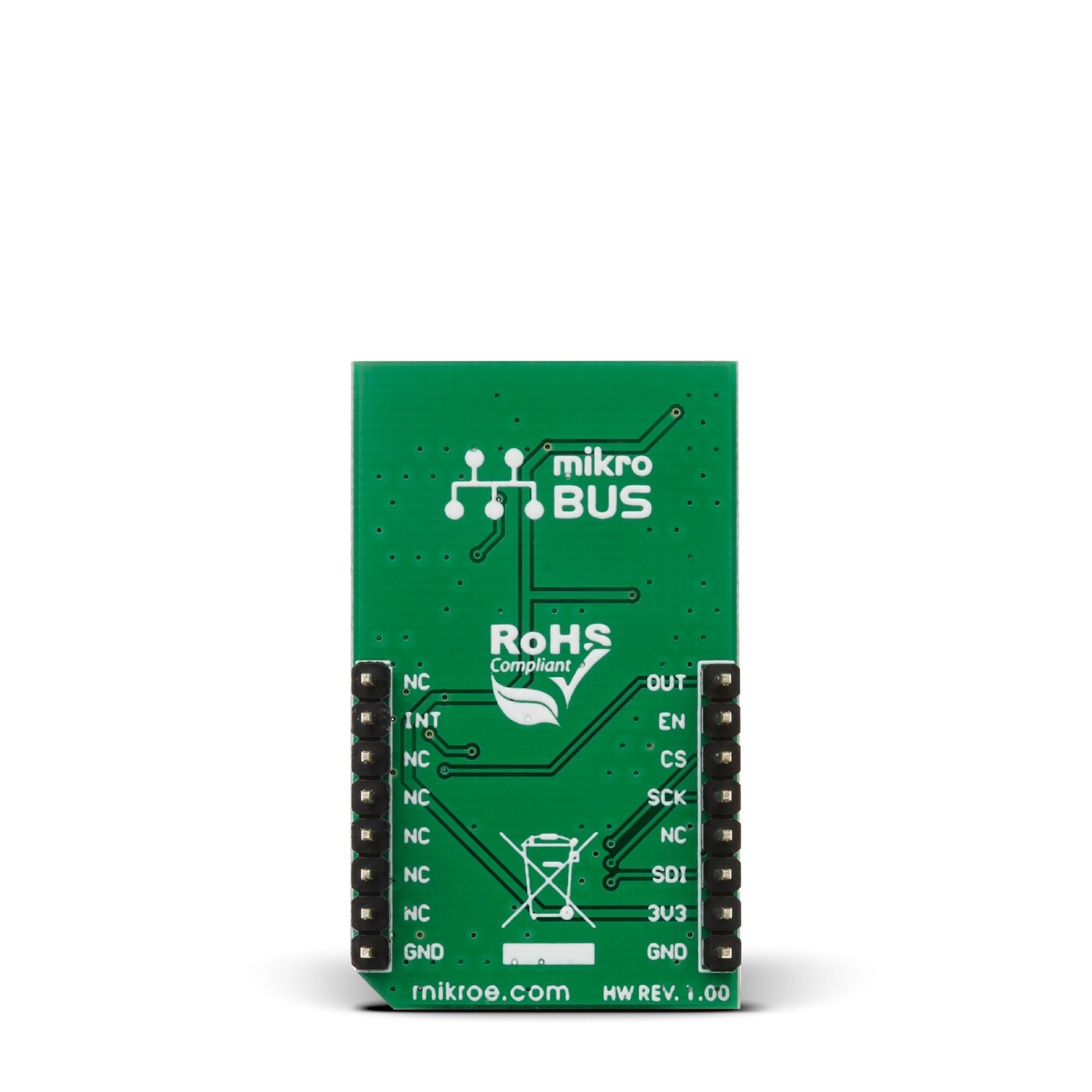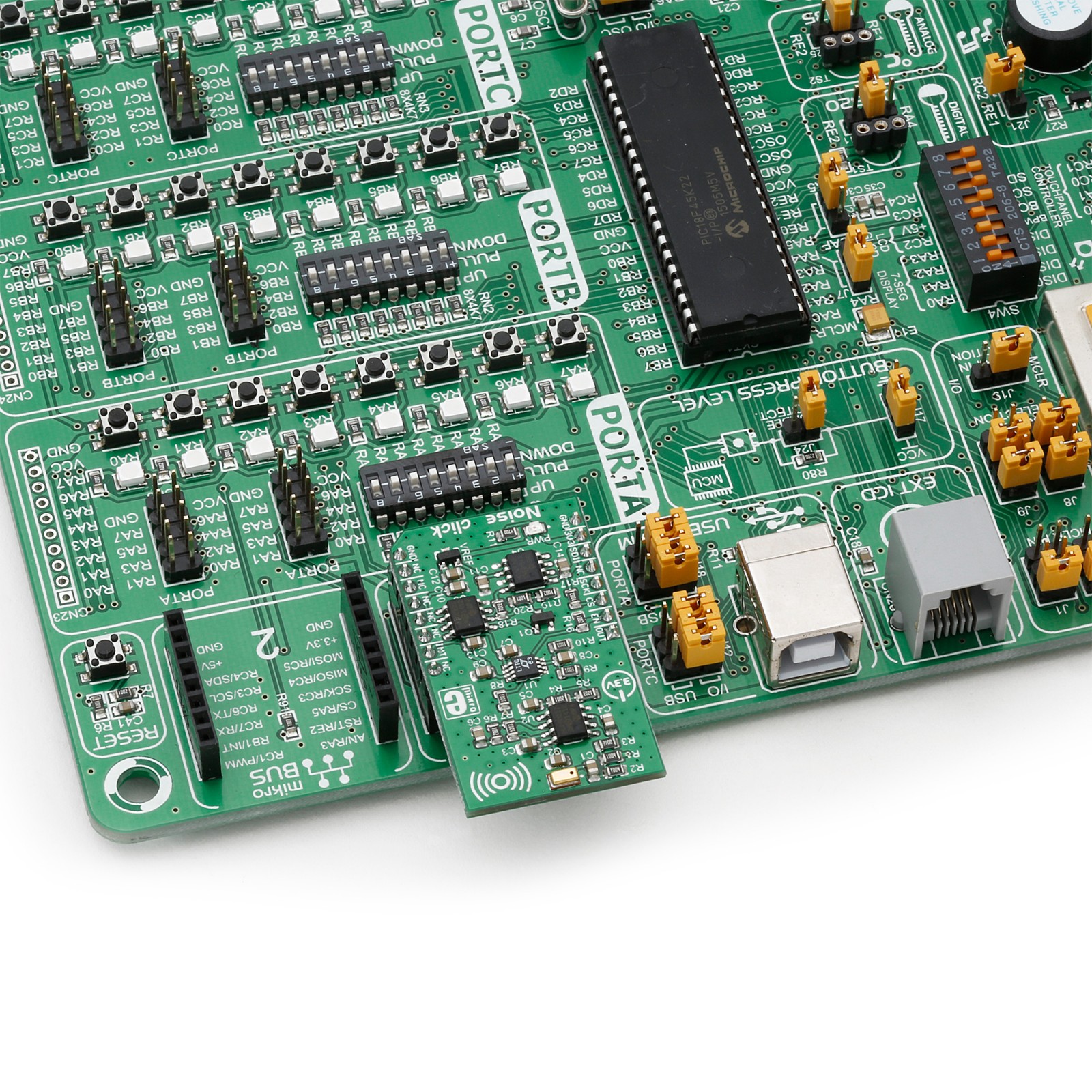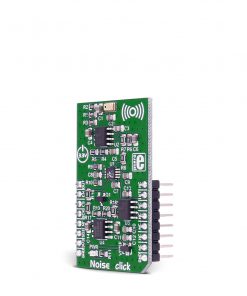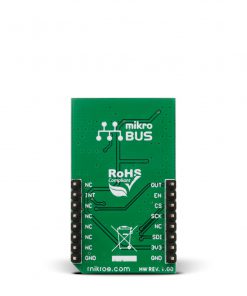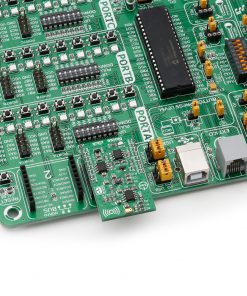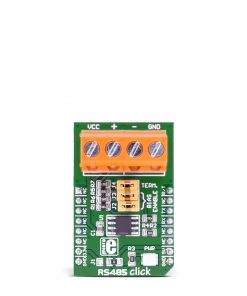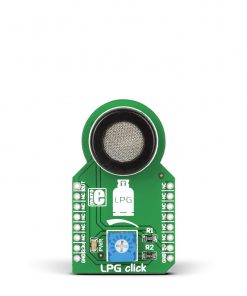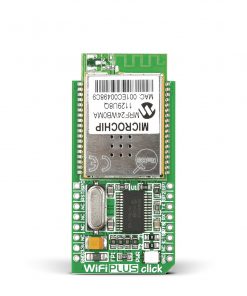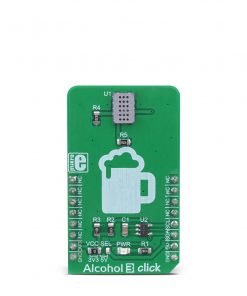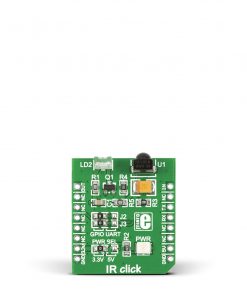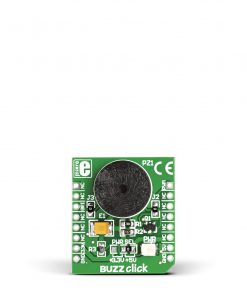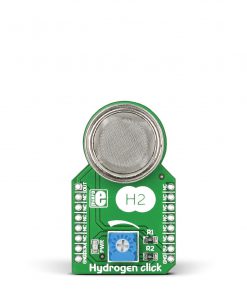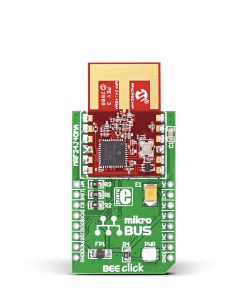Noise Click
R650.00 ex. VAT
Noise Click is a compact add-on board that allows you to add noise-detecting circuitry to your application. This board features the MCP4921, a 12-bit DAC with an SPI interface from Microchip. The sound this Click board™ receives through an analog microphone. The Noise Click triggers an interrupt when the ambient sound volume reaches the set threshold. The threshold should be configured through a trial and error from a 4096 discrete value to select from. In addition, Noise Click also enables you to monitor the voltage levels from the microphone directly. This Click board™ makes the perfect solution for the development of the application of sound monitoring for alarm systems and environmental monitoring.
Noise Click is supported by a mikroSDK compliant library, which includes functions that simplify software development. This Click board™ comes as a fully tested product, ready to be used on a system equipped with the mikroBUS™ socket.
Stock: Lead-time applicable.
| 5+ | R617.50 |
| 10+ | R585.00 |
| 15+ | R552.50 |
| 20+ | R531.70 |

